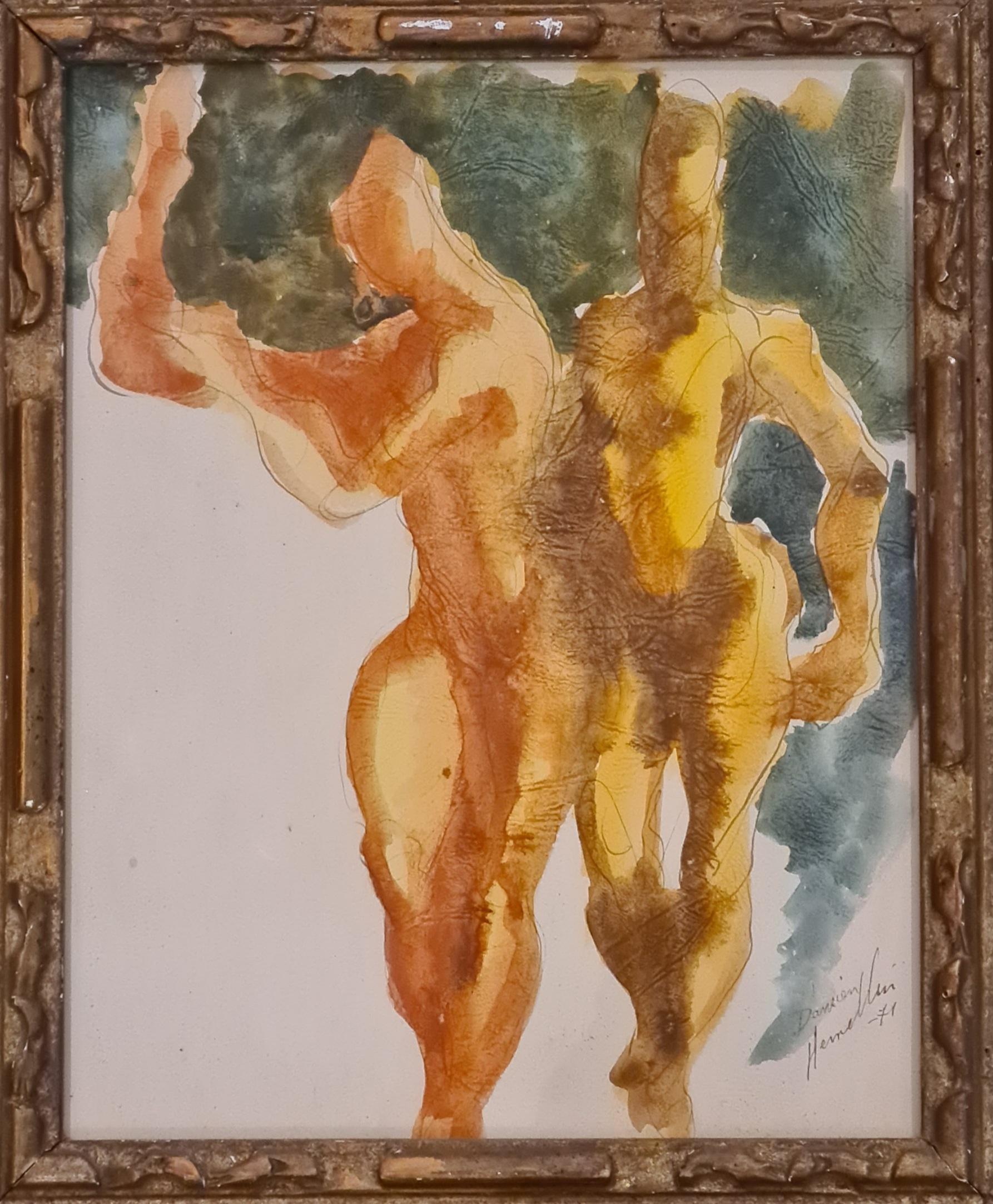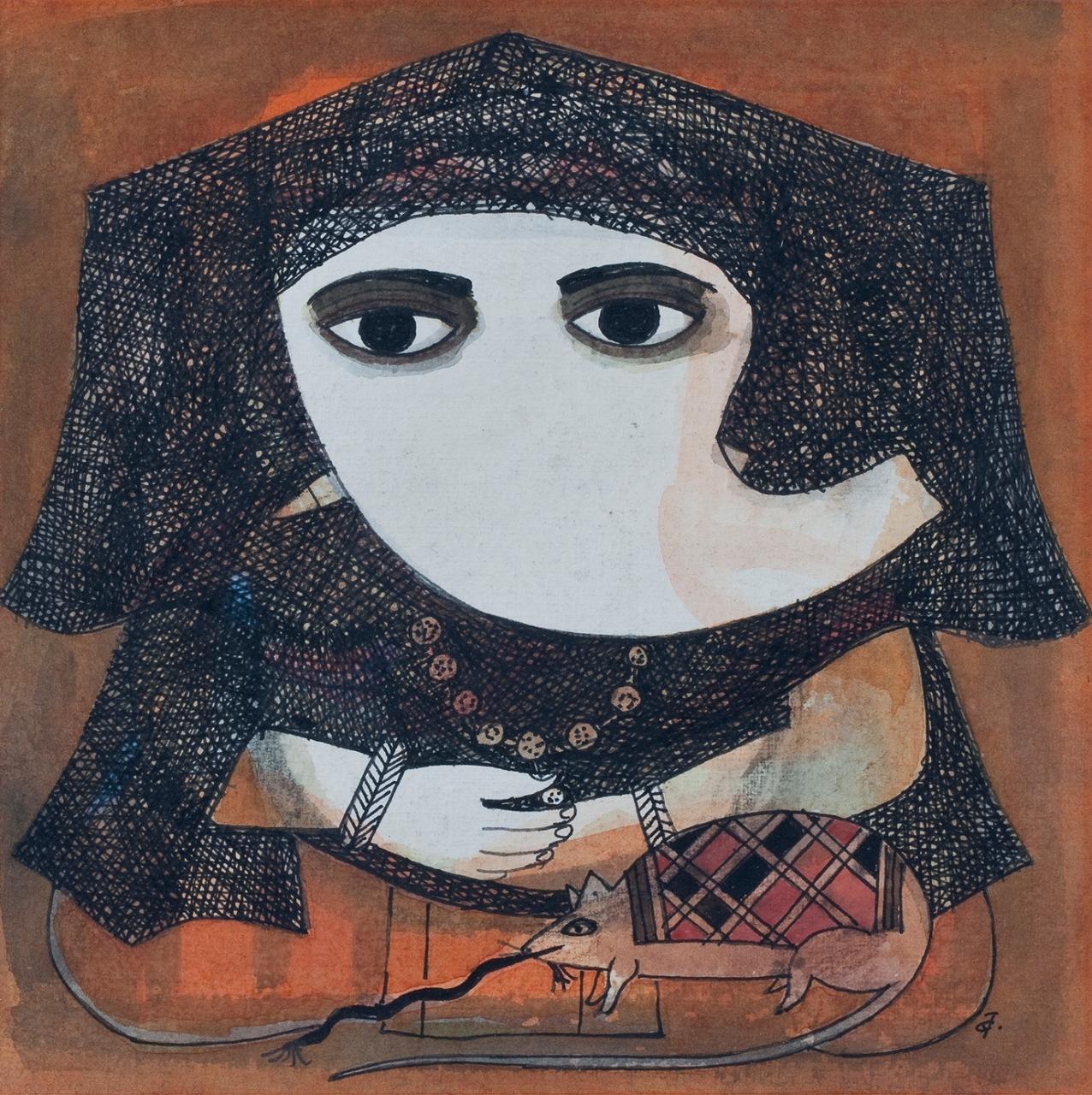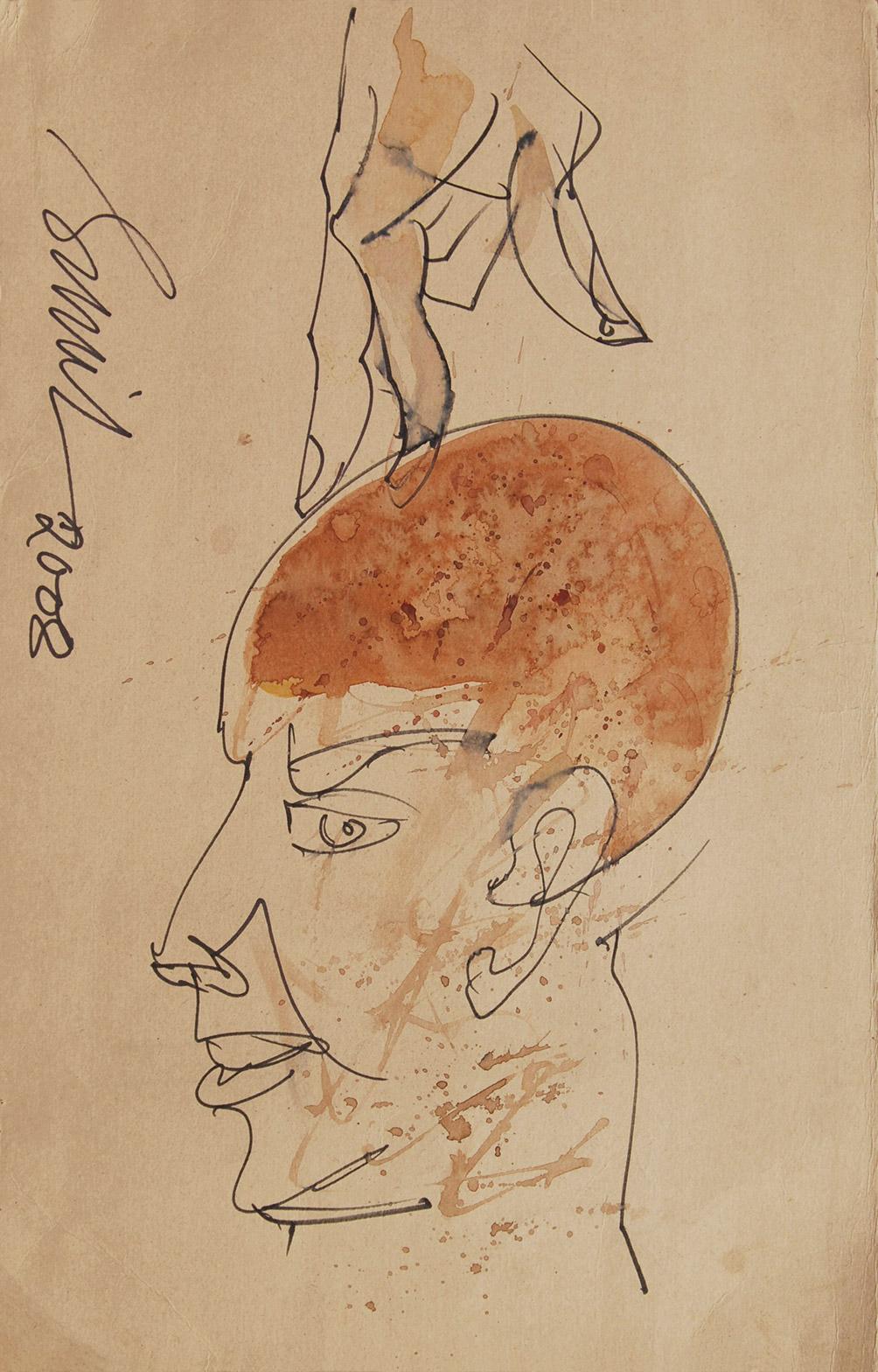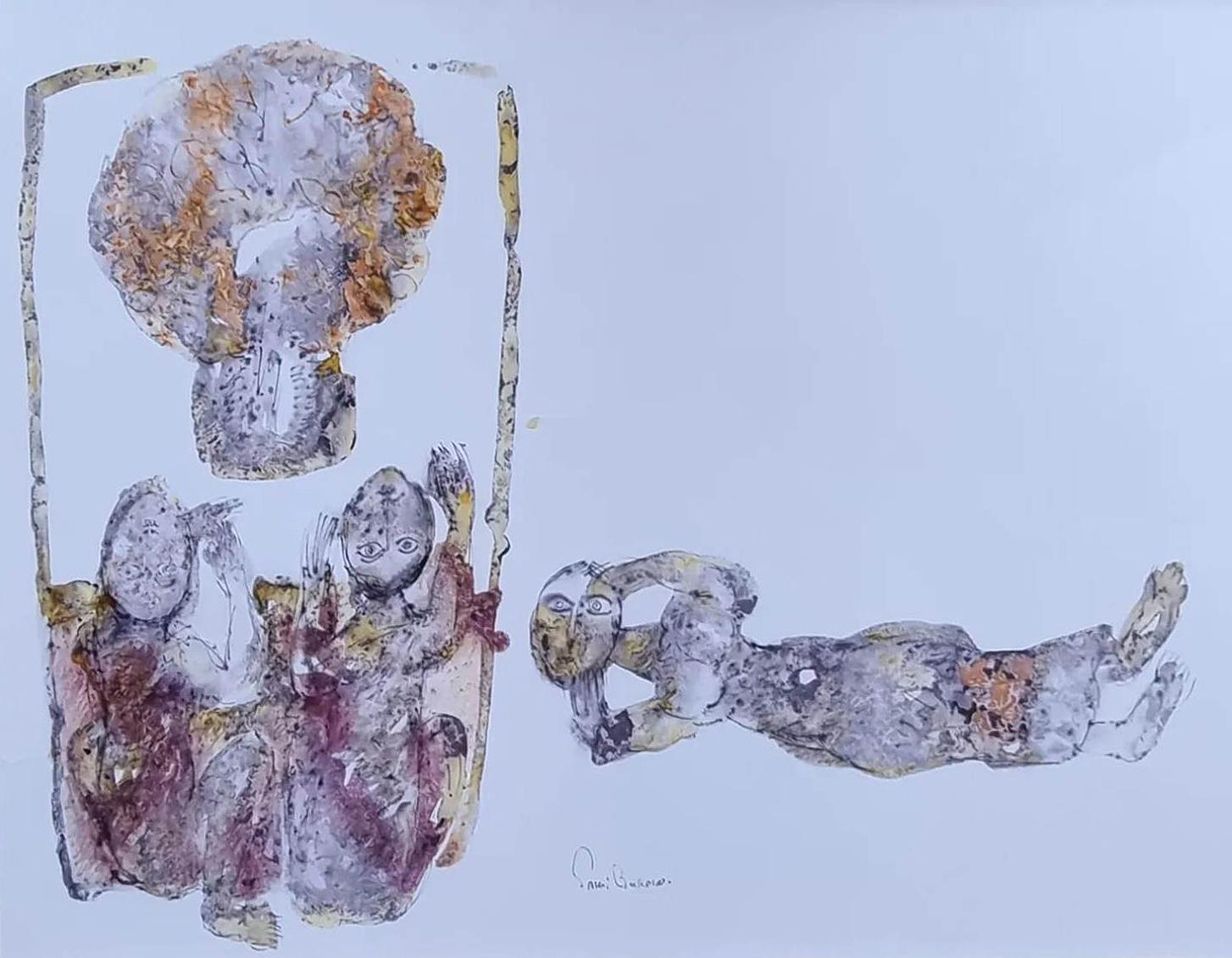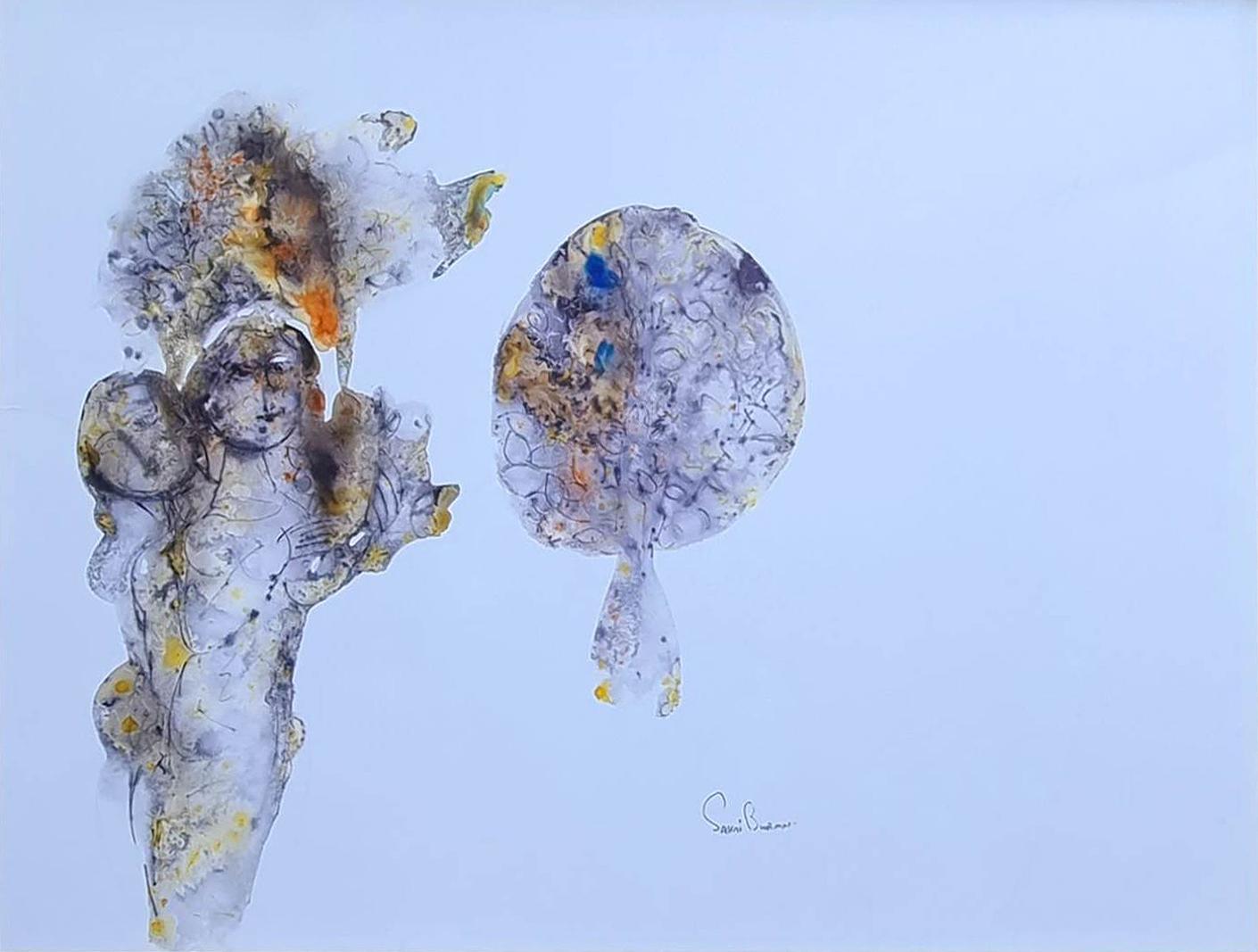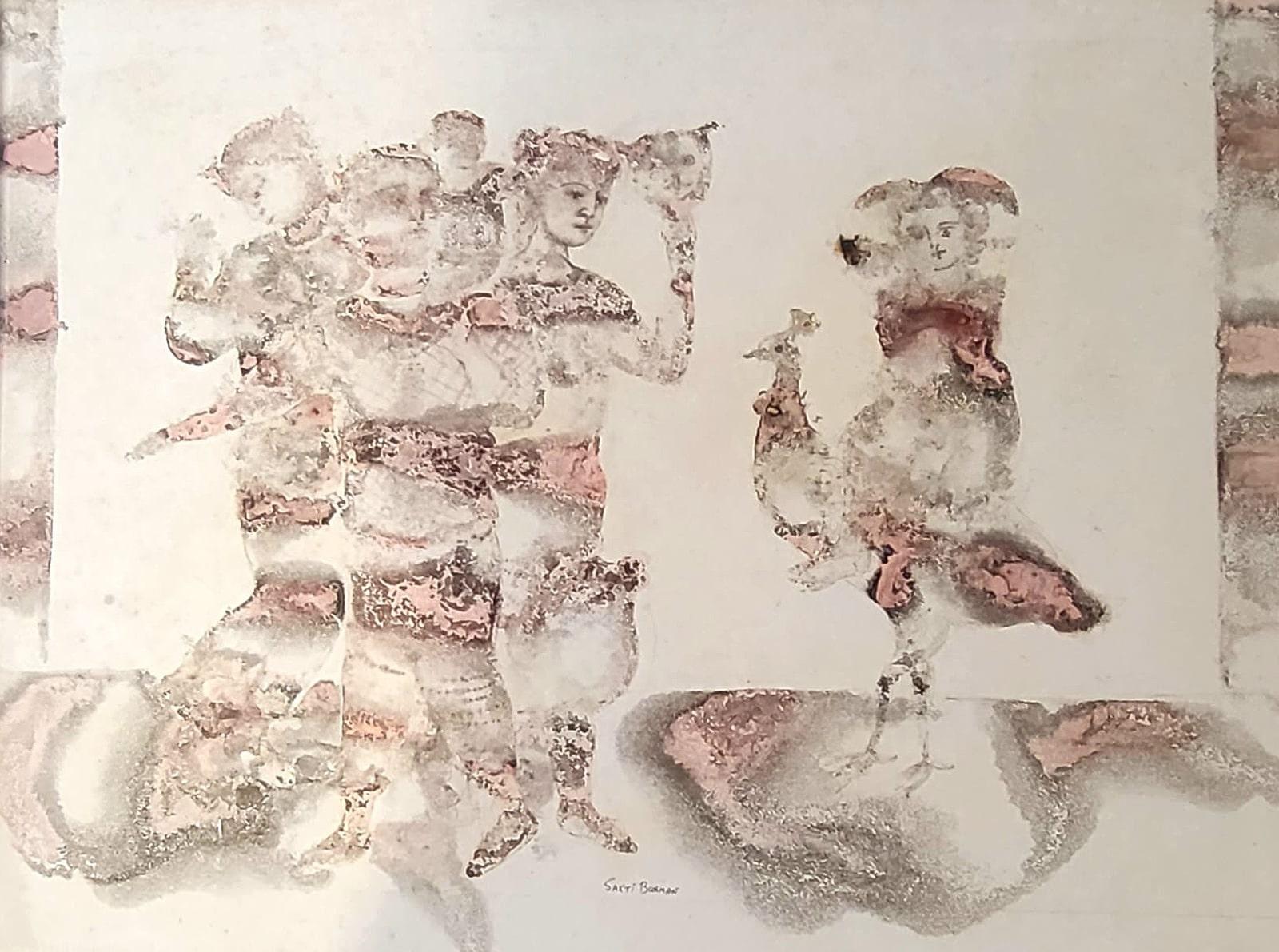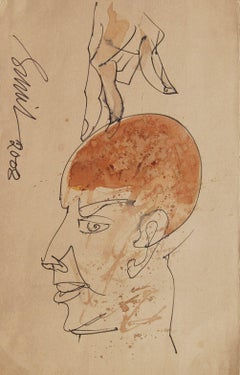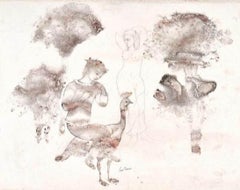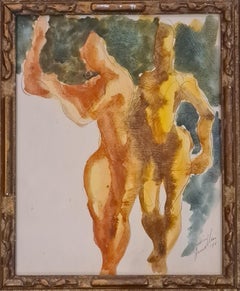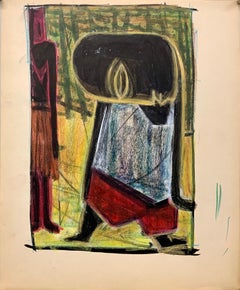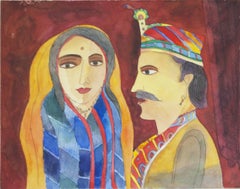
The Prince & Princess
View Similar Items
Want more images or videos?
Request additional images or videos from the seller
1 of 8
Badri NarayanThe Prince & Princess2013
2013
About the Item
- Creator:Badri Narayan (1929 - 2013, Indian)
- Creation Year:2013
- Dimensions:Height: 19 in (48.26 cm)Width: 22 in (55.88 cm)Depth: 1 in (2.54 cm)
- Medium:
- Movement & Style:
- Period:
- Condition:
- Gallery Location:Kolkata, IN
- Reference Number:1stDibs: LU60432857061
About the Seller
4.9
Vetted Seller
These experienced sellers undergo a comprehensive evaluation by our team of in-house experts.
Established in 2004
1stDibs seller since 2017
119 sales on 1stDibs
Typical response time: 23 hours
More From This SellerView All
- Ganesha, Watercolor & Ink on Paper, Black, Brown by Modern Indian "In Stock"By Badri NarayanLocated in Kolkata, West BengalBadri Narayan - Ganesha - 7.5 x 7.5 inches ( unframed size ) 17 x 17 inches ( Framed Size ) Watercolor & Ink on Paper Style : The artist’s paintings are narrative, and titles like ...Category
Early 2000s Modern Figurative Paintings
MaterialsPaper, Mixed Media, Watercolor, Ink
- Head, Ink & Watercolour on Paper by Indian Artist Sunil Das "In Stock"By Sunil DasLocated in Kolkata, West BengalSunil Das - Head, Ink & Watercolour on paper - 11 x 17.25 inches (unframed size) Free Shipping Without Frame Sunil Das (1939-2015) was a Master Modern Indian Artist from Bengal. Ex...Category
Early 2000s Modern Figurative Drawings and Watercolors
MaterialsPaper, Ink, Charcoal, Watercolor
- Untitled, Figurative, Watercolour on Paper by Modern Artist "In Stock"By Sakti BurmanLocated in Kolkata, West BengalSakti Burman - Untitled Watercolour on Paper 30 x 20 inches Born : 1935 Kolkata Education : 1956 Government College of Arts and Crafts in Kolkata and the Ecole Nationale des Beaux ...Category
1960s Modern Figurative Paintings
MaterialsPaper, Watercolor
- Kamdhenu, Figurative, Watercolour on Paper by Modern Artist "In Stock"By Sakti BurmanLocated in Kolkata, West BengalSakti Burman - Kamdhenu Watercolour on Paper 14 x 20 inches Born : 1935 Kolkata Education : 1956 Government College of Arts and Crafts in Kolkata and the Ecole Nationale des Beaux ...Category
1980s Modern Figurative Paintings
MaterialsPaper, Watercolor
- Untitled, Figurative, Watercolour on Paper by Modern Artist "In Stock"By Sakti BurmanLocated in Kolkata, West BengalSakti Burman - Untitled Watercolour on Paper 26 x 20 inches, 1960 Born : 1935 Kolkata Education : 1956 Government College of Arts and Crafts in Kolkata and the Ecole Nationale des ...Category
1960s Modern Figurative Paintings
MaterialsPaper, Watercolor
- Untitled, Figurative, Watercolour on Paper by Modern Artist "In Stock"By Sakti BurmanLocated in Kolkata, West BengalSakti Burman - Untitled Watercolour on Paper 26 x 20 inches, 1960 Born : 1935 Kolkata Education : 1956 Government College of Arts and Crafts in Kolkata and the Ecole Nationale des ...Category
1960s Modern Figurative Paintings
MaterialsPaper, Watercolor
You May Also Like
- The Dancers, French Late Mid Century Gouache on Textured PaperLocated in Cotignac, FRLate Mid Century French watercolour and Gouache on handmade paper of a pair of dancers by Damien Hermellin. Signed and dated bottom right. Pres...Category
1970s Modern Figurative Drawings and Watercolors
MaterialsPaper, Watercolor, Gouache, Handmade Paper
- 1950s "Mark" Oil Pastel and Gouache Figurative Painting NYC Modern Mid CenturyBy Donald StacyLocated in Arp, TXDonald Stacy "Mark" c.1950s Oil pastel and gouache paint on paper 14x17" unframed Unsigned Came from artist's estate Donald Stacy (1925-2011) New Jersey Studied: Newark School of ...Category
Mid-20th Century Modern Figurative Paintings
MaterialsGouache, Paper, Oil Pastel
- "In Foreign Parts" Eugene Higgins, Southwestern Pueblo, Modern FigurativeBy Eugene HigginsLocated in New York, NYEugene Higgins In Foreign Parts, circa 1913 Signed lower right Watercolor on paper Sight 17 x 13 inches Born William Victor Higgins in 1884 to a Shelbyville, Indiana farm family where the only art Victor was aware of as a child was his father's love of flowers. "He loved their forms and their colors, and he tended his garden as a painter might work a canvas." At the age of nine, Victor met a young artist who traveled the Indiana countryside painting advertisements on the sides of barns. He purchased paints and brushes so the young Higgins could practice his own artwork on the inside of his father's barn. He also taught Victor about art museums and especially about the new Chicago Art Institute. This information never left the young artist, and he saved his allowance until his father allowed him at the age of fifteen to attend Chicago Art Institute. He worked a variety of jobs to finance his studies both there and at the Academy of Fine Arts. Victor Higgins traveled to New York in 1908, where he met Robert Henri, who became a significant influence by depicting every-day scenes and stressing the importance of the spirit and sense of place as important factors in painting. Higgins was also greatly affected by the New York Armory Modernism Show of Marsden Hartley in 1913. While Victor Higgins was in Chicago he met former mayor and avid collector Carter H. Harrison who was to prove instrumental in the growth of Higgins career for several years. Harrison agreed to support Higgins for four years to go to Paris and Munich and paint and study in the great museums in Europe. While at the Academie de la Grande Chaumier in Paris (1910-1914) he met Walter Ufer, who was another Chicago artist being sponsored by Carter Harrison. This meeting was not only a life-long friendship, but the beginning of a great change in the way Higgins looked at "American" art. He decided that America needed it's own authentic style rather than the 19th Century classic style he was taught in Europe. Very soon after returning to Chicago in 1914, Harrison sent him and Walter Ufer on a painting trip to Taos, New Mexico for a year in exchange for paintings. Higgins made other similar agreements and was able to support himself with his painting. This trip was a life-changing experience and introduced Higgins to the authentic America he had been looking for. In 1914 Taos was an isolated village about twelve hours from Santa Fe on an impossible dirt road. But the colorful life of the pueblo people and the natural beauty drew a collection of artists who became the Taos art colony, from which the Taos Society of Artists was founded in 1915. Victor Higgins became a permanent resident within a year of his arrival and a member of the society in 1917, exhibiting with Jane Peterson in 1925 and with Wayman Adams and Janet Scudder in 1927. The members would travel around the country introducing the Southwest scenes with great success. He remained a member until the Society's dissolution in 1927. Higgins was the youngest member of the group of seven. Other members were Joseph Henry Sharp, Bert Phillips...Category
1910s American Modern Figurative Drawings and Watercolors
MaterialsWatercolor, Paper
- Chicago Jewish Modernist Judaica Painting Simchat Torah WPA Artist Israeli FlagsBy Alexander Raymond KatzLocated in Surfside, FLThis has young ISraeli pioneers dancing with the flag as typical of works of the late British mandate Palestine era early state of Israel. Genre: Modern Subject: Figurative (stained glass style) Medium: Mixed media gouache on paper Hand signed lower left Alexander Raymond Katz, Hungarian / American (1895 – 1974) Alexander Raymond Katz was born in Kassa, Hungary, and came to the United States in 1909. He studied at the Art Institute of Chicago and the Chicago Academy of Fine Arts. In the late 1920s, he worked as a director of the Poster Department at Paramount Studios. He was appointed the Director of Posters for the Chicago Civic Opera in 1930. During the Great Depression, notable architect Frank Lloyd Wright urged Katz to become a muralist. In 1933, he was commissioned to paint a mural for the Century of Progress exposition in Chicago. In 1936, he painted the mural History of the Immigrant for the Madison, Ill., post office. Katz’s works were included in various exhibitions and now are part of several museum collections, including those of the Art Institute of Chicago; Corcoran Gallery of Art, Washington, D.C.; and the Jewish Museum, New York. His murals, bas-reliefs and stained glass designs adorn more than 200 Jewish synagogues in the United States. Katz and other Jewish artists in Chicago who expressed Jewish and Biblical themes were inspired by the artist Abel Pann (1883-1963). Pann, who is regarded as the leading painter of the Land of Israel, exhibited in the Art Institute of Chicago in 1920. Early in his career, Katz began to explore the artistic possibilities inherent in the characters of the Hebrew alphabet. He developed aesthetic and philosophical interpretations of each letter and became the leading innovator and pioneer in the field of Hebraic art. Katz applies this concept in the woodcut Moses and the Burning Bush. Hebrew letters appears in Moses’ head, his cane and inside the flame. The initial of Moses’ name crowns his head. The letter in the flame is the first letter of the name of God. A combination of images and Hebrew letters appeared commonly in illustrations of the scene Moses and the Burning Bush in the Haggadah, the book of Passover. The symbolism of the burning bush corresponds to the motifs of A Gift to Biro-Bidjan. Among the fourteen participating artists were notable Chicago modernists Todros Geller, Mitchell Siporin...Category
Mid-20th Century Modern Figurative Paintings
MaterialsPaper, Gouache
- Large Watercolor Painting John Groth, Men Wrestling, Esquire Magazine WPA ArtistBy John GrothLocated in Surfside, FLJohn August Groth (American, 1908-1988) "Wrestling Match," Watercolor painting, hand signed upper right and inscribed upper left, "Las Palmas Canary Islands Lucha Canary Wrestling". Framed Size: 21'' x 29'', 53 x 74 cm (sight); 28.5'' x 36.25'', 72 x 92 cm (frame). Depiction of a wrestling match in a city square. John August Groth (1908 - 1988) was an illustrator and art teacher. He gained recognition as a war correspondent-illustrator. He studies at the Art Institute of Chicago and at Art Students League with Todros Geller, Robert Brackman, Arnold Blanch and George Grosz. He was a member: Society of American Etchers; American Newspaper Guild; Society of Illustrators; Associate Member of the National Academy of Design; American Water Color Society. Positions : Art Director at Esquire 1933 - 1937, Parade Publications 1941 - 1944; War Correspondent for Chicago Sun 1944; American Legion Magazine 1945; Artist-Correspondent in Vietnam 1967.Teacher at Art Students LeagueHe was the first art director of Esquire Magazine and taught at the Art Students League, the Pratt Institute, and the Parsons School of Design. In 1940, he was included in an exhibition at MOMA, titled, "PM Competition: The Artist as Reporter." The exhibition included Philip Guston, Reginald Marsh, John Tworkov, John Heliker, Adolf Dehn, and Chet La More. Groth began sketching intently during the Great Depression after studying at the Art Institute of Chicago. Following the advice of an editor, he penned 100 sketches a day for years. He learned to increase his speed by listening to sports on the radio and sketching the action as fast as he could. "I would listen to the games on the radio at night, and sketch the plays. It made me very quick." His break came when Arnold Gingrich, an editor for Esquire magazine, approached him at an art show in Chicago and offered him a position. "The way (Arnold Gingrich) told it," John Groth says, "he found this barefoot, bearded kid in the park, and the next day made him art director of the world's leading men's fashion magazine. But I swear I was wearing shoes." Groth went on to work as a correspondent and illustrator for the Chicago Sun, Collier's, Sports Illustrated, and The Saturday Evening Post. He developed a passion for war zones. He covered six different wars and was one of the first correspondents in Paris after its liberation. "It is only at war that I feel complete... There, you meet all sort of men -- farmers, mechanics, college professors. It rains on them and it rains on you. The shells burst in the air, and you are there, too." He would make a splash when he beat out friend and rival, Ernest Hemingway, into Paris in 1944. Hemingway was writing for the Chicago Tribune and Groth for the Chicago Sun. Groth was in the first jeep into Paris and got the scoop. His headline read, "Yanks are in Paris!" Hemingway would later write about Groth's technique. “None of us understood the sort of shorthand he sketched in. The men would look at the sketches and see just a lot of lines. It was a great pleasure to find what fine drawings they were when we got to see them. Groth went on to illustrate such classic books as: A Christmas Carol, All Quiet on the Western Front, The Grapes of Wrath, The War Prayer, and Gone with the Wind. Deborah Churchman described Groth's work in a 1980 Washington Post article: "Groth's pictures center on the day-to-day life of people caught in terrifying circumstances -- armies occupying cities, soldiers sweeping roads for land mines, bullfighters facing death." Bernie Schonfeld, a photographer for Life Magazine said of Groth, "John is one of the gentlest people in the world, and he always gets himself into the wildest hell hole." He joined the First Congress of American Artists Against War and Fascism in 1936, along with Stuart Davis, Peter Blume...Category
Mid-20th Century American Modern Figurative Paintings
MaterialsPaper, Watercolor
- Glassblowers WPA American Scene Mid- 20th Century Modern Figurative Workers 1932By Harry GottliebLocated in New York, NYGlassblowers WPA American Scene Mid- 20th Century Modern Figurative Workers. Dated and signed "32 Harry Gottlieb" lower right. Sight: 13 1/8" H x 18 1/4" W. Harry Gottlieb, painter, screenprinter, educator, and lithographer, was born in Bucharest, Rumania. He emigrated to America in 1907, and his family settled in Minneapolis. From 1915 to 1917, Gottlieb attended the Minneapolis Institute of Arts. After a short stint as an illustrator for the U.S. Navy, Gottlieb moved to New York City; he became a scenic and costume designer for Eugene O"Neill's Provincetown Theater Group. He also studied at the Philadelphia Academy of Fine Arts and the National Academy of Design. He was one of America's first Social Realist painters, influenced by that Robert Henri-led movement in New York City where Gottlieb settled in 1918. He was also a pioneer in screen printing, which he learned while working for the WPA. He married Eugenie Gershoy, and the couple joined the artist colony at Woodstock, New York. He lectured widely on art education. In 1923, Gottlieb settled in Woodstock, New York and in 1931, spent a a year abroad studying under a Guggenheim Fellowship. In 1935, he joined the Federal Art Project...Category
1930s American Modern Figurative Paintings
MaterialsPaper, Gouache
